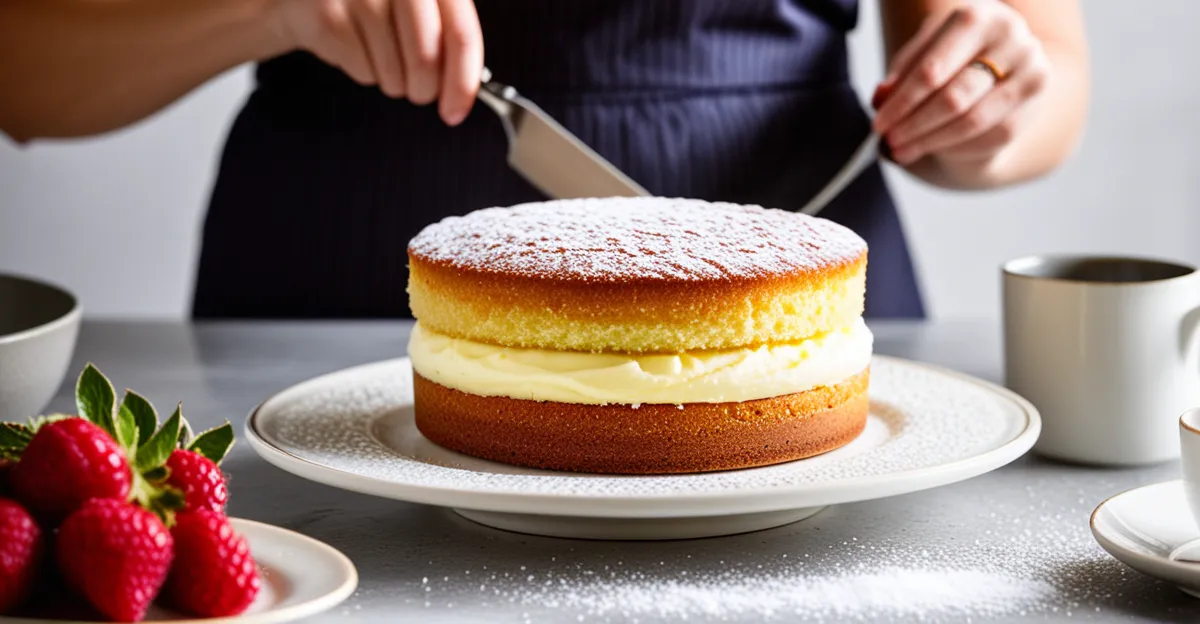Essential Ingredients and Preparation Tips for a Moist Victoria Sponge
Achieving a moist Victoria sponge starts with selecting the right Victoria sponge cake ingredients. Using the best flour for Victoria sponge—typically a soft plain flour—ensures a tender crumb. This flour type has lower protein content, which reduces gluten formation and keeps the cake light rather than dense.
Butter vs margarine: opt for real butter to add richer flavour and improve moisture retention. Margarine’s higher water content can sometimes lead to a drier result. Accurate weight measurements of ingredients like flour, sugar, and butter are crucial. Slight deviations can affect texture and moisture balance.
Also read : What are the essential spices for an authentic chicken tikka masala?
Another key tip is ingredient temperature. Bringing eggs and butter to room temperature before mixing allows them to combine smoothly. Cold butter is harder to cream with sugar, which affects air incorporation—a vital step for moisture and lightness.
In summary, prioritising quality ingredients, careful measurements, and proper temperature control creates the perfect foundation for a moist Victoria sponge. These preparation elements work together to maximise moisture retention while supporting an even, delicate crumb structure.
Topic to read : How can you incorporate seasonal vegetables into a classic roast dinner?
Best Mixing Techniques to Enhance Moisture
Mastering the creaming method is essential for a moist Victoria sponge. Creaming butter and sugar together until pale and fluffy traps tiny air bubbles. This air is critical for a light texture and moisture retention during baking.
When adding eggs, incorporate them gradually. This prevents curdling, which can cause a dense, dry sponge. Mixing eggs in small amounts allows the batter to maintain a smooth consistency and preserves the moisture balance.
The mixing technique Victoria sponge demands gentle handling when folding in the flour. Use a spatula to fold rather than stir vigorously; this keeps air trapped in the batter. Overmixing flour develops gluten, resulting in a tougher texture and less moisture.
Maintaining air in the batter throughout the mixing process is key. The trapped air expands in the oven, producing a tender crumb. Skipping these precise steps reduces the sponge’s ability to hold moisture, leading to dryness.
In summary, creaming well, careful egg incorporation, and gentle folding with the best flour for Victoria sponge ensure an airy, moist cake. Employing correct mixing techniques maintains the airiness essential for a soft bite.
Oven Settings and Baking Times for a Perfectly Soft Sponge
Achieving a moist Victoria sponge depends heavily on the Victoria sponge oven temperature. Setting the oven to an ideal moderate heat—usually around 160–170°C (320–340°F) for fan ovens—ensures even baking. Too high a temperature causes rapid crust formation, which traps steam and cracks the cake, leading to dryness. Conversely, too low leaves the cake undercooked and dense.
Proper rack placement is equally crucial. Position the cake tin on the middle rack to promote balanced heat circulation. This placement helps the cake bake evenly, preventing dry edges or soggy centers.
Monitoring baking time is vital. Victoria sponge cakes typically require 20–25 minutes, but this varies by oven and tin size. Use the skewer test—insert a clean skewer into the cake’s center; it should come out clean or with a few moist crumbs, never wet batter. Overbaking evaporates too much moisture, while underbaking causes structural collapse.
Avoid opening the oven door frequently, as temperature fluctuations disrupt rising and moisture retention. Consistent temperature and baking times, paired with correct oven settings, secure a perfectly soft, moist Victoria sponge every time.





